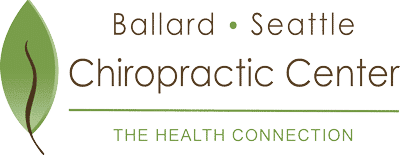Why do Back Muscles feel like a Knot or a Rope?
What Are Muscle Knots?
Often people refer to the pain in their shoulders as “knots” or “ropes”. Knots and Ropes are muscles that are being overstretched. Muscle knots, also known as myofascial trigger points, are tight, tense areas that can form within muscle fibers. They often feel like small, hard nodules or bumps under the skin. These knots can occur for various reasons, including muscle overuse, poor posture, muscle imbalances, physical trauma, stress, or repetitive motions.
Muscle knots develop when muscle fibers contract and don’t release, causing the muscle to remain in a constant state of tension. This can lead to discomfort, pain, and restricted range of motion. The affected muscle may feel tender, achy, or even refer pain in other areas of the body. When a muscle knot is present, blood flow to that area may be reduced, which can contribute to discomfort. In some cases, the surrounding muscles may compensate for the tension, leading to further muscle imbalances and discomfort.
Symptoms Of Muscle Knots
The symptoms of muscle knots, also known as myofascial trigger points, can vary from person to person. Here are some common symptoms associated with muscle knots:
- Localized pain ranging from mild to severe like lower back pain
- Tenderness in the affected area
- Restricted range of motion
- Muscle tightness
- Tension Headaches
- Radiating or referring pain to other areas of the body
- Muscle weakness
- Increased sensitivity to touch or pressure
It’s important to note that the symptoms can vary depending on the location and severity of the muscle knot. If you are experiencing persistent or severe symptoms, it’s advisable to consult a healthcare professional for an accurate diagnosis and appropriate treatment.
Causes Of Muscle Knots
Muscle knots, or myofascial trigger points, can form due to various causes:
- Muscle overuse or repetitive strain
- Poor posture
- Muscle imbalances
- Physical trauma or injury
- Stress and tension
- Lack of physical activity
- Dehydration and muscle fatigue
Home Remedies For Muscles Knots
Here are some home remedies for muscle knots:
- Apply heat to the area.
- Gently massage the knot or use a foam roller.
- Perform gentle stretching exercises.
Stay hydrated. - Rest and relax.
- Improve your posture.
- Consider using over-the-counter pain relievers like NSAIDs.
Treatments For Muscle Knots
Chiropractic treatment is a non-invasive approach that may help in addressing muscle knots, also known as myofascial trigger points. Chiropractors focus on the musculoskeletal system and aim to restore proper alignment and function. During a chiropractic session, the chiropractor may perform manual adjustments or manipulations to relieve tension and pressure on affected muscles. They may also use techniques such as soft tissue therapy, stretching, and exercises to promote muscle relaxation and improve range of motion. Additionally, chiropractors can provide guidance on posture correction and lifestyle modifications to prevent the recurrence of muscle knots. However, it’s important to consult a qualified chiropractor to determine the suitability of chiropractic treatment for your specific condition.
Rest
If you have muscle knots, it’s essential to take a break from the activities that are causing them or exacerbating your pain. Allow yourself and your body some time to rest so that you can recover, relax and rejuvenate.
Heat and Cold Therapy
Using a combination of heat and cold can help to relieve pain and inflammation due to muscle knots.
Stretch
Gentle stretching that elongates your muscles can help you to release tension in your body. Avoid straining your body or doing any activity that causes discomfort. As per Dr. Jerry Thomas Weider Jr DC, a leading Chiropractor in Seattle, the solution to any type of overstretched muscle is to flex the muscle in the opposite direction.
If you have knots in your shoulders, you need to flex your muscles behind you. So laying down and flexing your head back into a bed or arching your back will strengthen and shorten your overstretched muscles. The muscle will no longer send the signal of pain if they are not overstretched. By correcting your posture and consistently flexing/shortening your muscles, you can alleviate your own “knotty” pain. Flexing your overstretched muscles 5 minutes a day is a noticeable and effective technique.
Chiropractic Treatment
Muscle knots can be the result of joint dysfunction and restrictions in the body. Chiropractors will remove dysfunction and restriction through hands-on chiropractic manipulation techniques. Once those have been dealt with, then the knots themselves can begin to be worked on to release them.
Massage Therapy
Massage therapy increases circulation and improves blood flow. That can improve muscle function and help loosen up your muscles. This helps to relieve pain and stiffness. There are various types of massage. The type you’ll benefit from most will depend on the severity of your muscle knots.
At Ballard Seattle Chiropractic Center, when a massage therapist rubs knotted muscles, they feel like bumps and to the person receiving the massage, it feels like knots or ropes. They are a little painful when rubbed. When a cross-fiber technique is used on muscles, which is a rubbing motion that is 90 degrees to the muscle fibers, the muscle will start to separate and relax.
If you are struggling with muscle knots, Our expert chiropractors at The Ballard Seattle Chiropractic Center can help! Book your appointment today to find relief and improve your condition.

